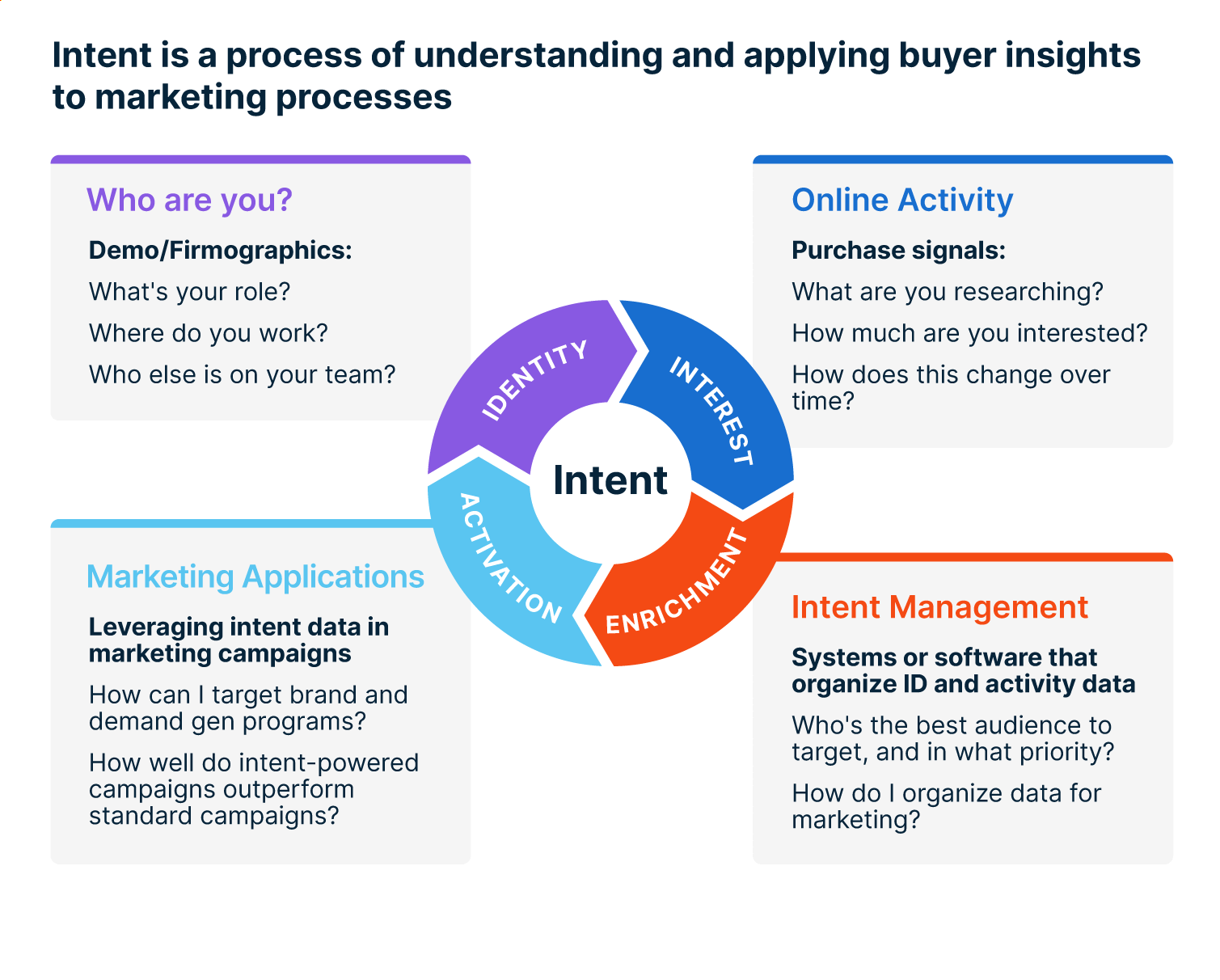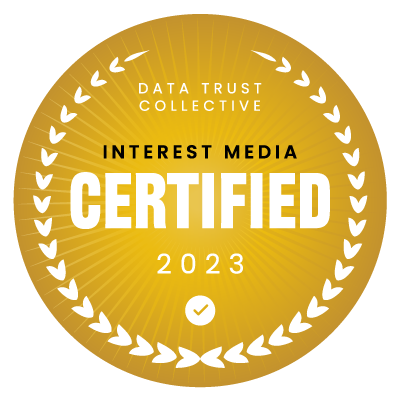
From Clicks to Conversions: How Intent Marketing is Revolutionizing Advertising
- Covering a quick overview of what is involved in an intent-based marketing strategy for advertisers
- Why you need to have Search Based Targeting on your list for 2023
- Trending digital marketing strategies for 2023 that could potentially shake up the media industry
In today’s digital world, consumers are bombarded with ads on multiple channels and platforms; it’s becoming challenging for advertisers to cut through the noise and capture the attention of their target audience. Advertisers need to adopt a more sophisticated and personalized approach to their marketing strategies to succeed in this hyper-competitive landscape.
What Does Intent Mean in Marketing?
Intent-based marketing is a strategy that focuses on understanding the consumer’s intent and delivering personalized content and messaging that resonates with their needs and interests. Let’s explore intent-based marketing, how it works, and why it’s critical to any successful digital marketing strategy.
Using intent-based marketing, brands can provide their customers with a personalized and relevant experience, resulting in higher engagement, increased conversion rates, and, ultimately, increased sales.
By leveraging intent data, marketers can gain insights into the consumer’s behavior, preferences, and needs, enabling them to create highly personalized and targeted marketing campaigns that deliver relevant content and messages to the right people at the right time. This personalized approach can help build stronger relationships with customers and increase the likelihood of conversion and retention.
Example of Intent-Based Marketing
An example of intent-based marketing is when a customer searches for a new laptop on a search engine like Google. Intent-based marketing would involve analyzing the customer’s search queries and identifying the intent behind the search, such as “best laptops for gaming” or “laptops for video editing.” Based on this analysis, a laptop brand might create targeted content, such as blog posts or videos, that address the customer’s specific needs and offer a solution that aligns with their intent. The brand might use targeted advertising to show the customer relevant ads for laptops that meet their requirements.
Advertisers can use this strategy to customize ads to potential customers’ needs. Since advertisers already know what customers are shopping for, it’s easier to get in front of them with a product or service they already intend to purchase. Gone are the days of wasted ad spending trying to capture consumers’ attention broadly. To hone into what customers’ needs mean a precise use of a budget and only chasing qualified leads.
Search Advertising is Intent-Based
Search advertising is considered intent-based targeting because it focuses on reaching customers actively searching for a particular product, service, or information. When a user enters a search query into a search engine like Google, they are expressing their intent to find something specific. This intent is a valuable signal for advertisers, as it can provide insights into the user’s needs and interests.
This type of advertising allows advertisers to target users based on the keywords they use in their search queries. Advertisers can bid on specific keywords relevant to their products or services, and their ads will be displayed to users searching for those keywords. The advertiser only pays for ads shown to users who are already interested in what they are offering, making it a cost-effective advertising strategy.
Search advertising enables advertisers to effectively reach customers in the customer journey’s consideration or purchase phase and deliver targeted and relevant ads that address their specific needs and interests. This can result in higher conversion rates and better return on investment (ROI) for the advertiser. Have you thought about utilizing AI to enhance this process?
Advertiser Marketing Trends To Include In 2023 Strategies
Based on trends and patterns that have emerged in recent years, some advertising predictions for 2023 that could potentially shake up the media industry include:
The Rise of Voice-Activated Advertising
With the increasing popularity of voice-activated assistants like Siri, Alexa, and Google Assistant, advertisers are likely to explore new ways to reach users. This type of advertising can be delivered through various channels, including smart speakers like Amazon Echo or Google Home, mobile devices with voice assistants like Siri or Google Assistant, or even in-car voice assistants. Voice-activated advertising may include sponsored recommendations or custom voice commands that activate a specific action or response.
Voice-activated advertising works by using natural language processing (NLP) to understand and interpret spoken language. This allows advertisers to tailor their ads to specific user queries or behaviors. For example, if a user asks their digital assistant for information about a certain product, they may receive an ad for that product as a response.
One of the benefits of voice-activated advertising is its potential for highly targeted and personalized advertising. Because voice assistants often have access to a user’s search history and other data, advertisers can use this information to deliver highly relevant ads. However, there are also concerns about privacy and data collection with voice-activated advertising.
The Continued Growth of Mobile Advertising
Mobile advertising has been on the rise for several years, which is expected to continue in 2023. Advertisers will continue optimizing their mobile ads for better user experience and increased engagement, including using augmented reality and other interactive features.
One of the main drivers of mobile advertising growth is the widespread adoption of smartphones and tablets. Mobile devices have become an integral part of everyday life for many people. They offer advertisers a unique opportunity to reach consumers wherever they are, at any time of day. Improvements in mobile technology, such as faster network speeds and more powerful processors, have enabled advertisers to deliver more engaging and interactive mobile ads, including video and rich media formats.
Another factor contributing to the growth of mobile advertising is the shift in consumer behavior towards mobile devices as the primary way of accessing the internet. As a result, advertisers are increasingly investing in mobile advertising to reach their target audience effectively. Advertisers can offer a range of targeting and personalization options, such as location-based, behavioral, and demographic targeting, allowing them to deliver more relevant and personalized ads to their audience.
Increased Use of Artificial Intelligence and Machine Learning
Advertisers will likely leverage AI and machine learning to analyze data and gain insights into consumer behavior. This can help them create more personalized and targeted advertising campaigns and automate certain aspects of the advertising process. AI can predict consumers’ behaviors before consumers themselves.
Being able to predict what a person needs gives advertisers a leg up on what ads consumers are shown. It’s like seeing the future and being one step ahead with a marketing campaign ready to go. Also, automating parts of a marketing strategy can free up marketers to focus on other aspects of their process.
Emphasis on Data Privacy and Transparency
Consumers are increasingly concerned about using their personal data for advertising purposes. As a result, advertisers are likely to prioritize data privacy and transparency, ensuring that users have more control over their data and are provided with clear information about how their data is being used.
Data privacy and transparency are essential for protecting individuals’ rights, building trust, complying with regulations, mitigating risks, and improving the user experience. Companies can create a more ethical and sustainable digital ecosystem by prioritizing these principles.
When companies collect and store personal data, there is always a risk of it being lost, stolen, or misused. By prioritizing data privacy and transparency, companies can reduce these risks by implementing security measures and being open about their data practices. By being transparent about their data practices, companies can provide users with more control over their personal information and give them the confidence to engage with the company’s products or services. This can lead to a better user experience and help companies build stronger relationships with their users.
The Benefits of These Strategies are Endless
Advertisers cannot afford to waste their budgets in this current market or reach out to potential consumers based on a guess. Embracing these trends is the only way to survive in the competitive world of search. To stay relevant in the marketing world, maximizing these trends for your gain is a way to get ahead of your competitors and reach your target audience.
Interested in learning more? Check out our Free White Paper on The Unbeatable Nature of Intent-Based Advertising















Pingback: Inside the Cost of Social Fragmentation - Interest Media